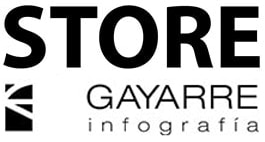The model 3D work is independent of the “artistic” development of the video.
You already know what it is when you have had to make a fixed image in other projects.
Be smart with the model 3D
There is no point in further modeling.
Therefore, after the definition of the storyboard, it is necessary to maintain a very comprehensive meeting of the whole team. In it, after understanding how the cameras and their movements will be, we will come to agree which parts of the project are to be modeled and which are not.
From that moment, the modeler can start working the model 3D.
Modern times (1936)
Its immediate horizon will be to provide the renderer with some unfinished models and with little detail of each of the spaces to be visualized.
Once facilitated, the renderer will be able to begin with its tasks and the modeler will be able to continue going through giving more detail to each of the scenarios.
In turn, when you receive the first feedbacks of the renderer, you must make the necessary modifications to go polishing the model 3D. This is very common. There are always parts of the modeling to be polished.
Unfortunately, error retouching is not so easy
Here lies one of the most important differences between the modeling required for the realization of a still image and an animation. When the final work is a still image, we always have the wildcard of Photoshop. Even it is very complicated and disastrous the error made by the modeler, it can almost always be fixed. In fact, we even come to the conclusion that it takes longer to change the model and “re-render” than to retouch the post production failure. In animation this is not feasible.
As you know, the animation is the succession of 25 frames every second. When you make your first animation,
you will see that there are invisible errors in a fixed image that they are not in an animation.
I’ll give you a very usual example.
When modeling, for reasons that are not the case, you can go fast and place certain coplanar surfaces of the model 3D. This is usually not a problem in the case of a still image. The randomness of the calculation can result in the calculation going well. Or, if it goes wrong, is arranged in post production. If that happens in an animation, that error may be shown in some frames and not in others.
When you play the already calculated frames, you will notice that parts of the geometry are flashing somewhere in the scene. Obviously, that result is unacceptable and although sometimes can be solved in post production, I do not recommend it.
At that point (sometimes it’s very close to the due date), the “renderman” has to immediately notify the modeler to do again his work correctly.
There will be a stage in the process in which the work of the modeler is finished. But, the other two team members, still have tasks to perform. But, until then, it must be available to them, as we have said, to progressively model in more detail the scenes and solve the problems that appear in the model 3D.
Modeling tasks can include many facets, but we will discuss this in a later chapter.

